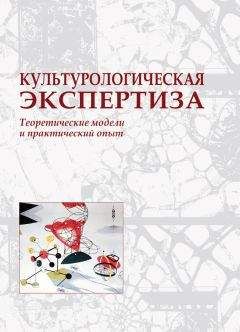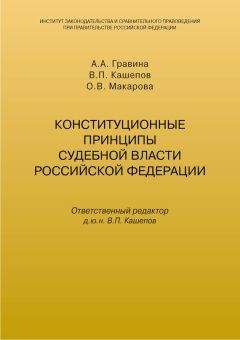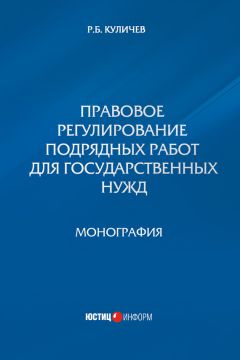Олдерт Фрай - Детекция лжи и обмана

Помощь проекту
Детекция лжи и обмана читать книгу онлайн
Bell, B. E. & Loftus, E. F. (1988). Degree of detail of eyewitness testimony and mock juror judgments./oMrtta/ of Applied Social Psychology, 18, 1111–1192.
Bell, B. E. & Loftus, E. E. (1989). Trivial persuasion in the courtroom: the power of (a few) minor details. Journal of Personality and Social Psychology, 56,669–619.
Bell, K. L. & DePaulo, В. M. (1996). Liking and lying.Basic and Applied Social Psychology, 18, 243–266.
Ben-Shakhar, G. & Dolev, K. (1996). Psychophysiological detection through the Guilty Knowledge technique: effects of mental countermeasures. Journal of Applied Psychology, 81, 213–281.
Ben-Shakhar, G. & Furedy J.J. (1990). Theories and applications in the detection of deception. New York: Springer-Verlag.
Blaauw, J. A. (1911). 99 tips voor het verhoor.Algemeen Politie Blad, 120, 281–296.
Boelhouwer, A. J. W., Merckelbach, H. L. G. J., Van Koppen, P. J. & Verbaten, M. N. (1996). Leugendetectie in Nederland (Rapport aan Minister van Justitie). Tilburg: University of Tilberg.
Bond, C. F. & Fahey, W. E. (1981). False suspicion and the misperception of deceit. British Journal of Social Psychology, 26, 41–46.
Bond, C. E & Robinson, M. (1988). The evolution of deception.Journal of Nonverbal Behavior, 12, 295–301.
Bond, C. E, Kahler, K.N. & Paolicelli, L. M. (1985). The miscommunication of deception: an adaptive perspective. Journal of Experimental Social Psychology, 21, 331–345.
Bond, С. E, Omar, A., Mahmoud, A. & Bonser, R.N. (1990). Lie detection across cultures. Journal of Nonverbal Behavior, 14, 189–205.
Bond, С.Е., Omar, A., Pitre, U., Lashley, B.R., Skaggs, L.M. & Kirk, C.T. (1992). Fishy-looking liars: deception judgment from expectancy violation. Journal of Personality and Social Psychology, 63, 969911.
Boychuk, T. (1991). Criteria-Based Content Analysis of children's statements about sexual abuse: a field-based validation study. Unpublished doctoral dissertation, Arizona State University, Tempe, AZ.
Bradley, M.T.& Janisse, M.P. (1981). Accuracy demonstrations, threat, and the detection of deception: cardiovascular, electrodermal and pupillary measures. Psychophysiology, 18, 301–315.
Bradley, M.T., MacLaren, V.V. & Black, M.E. (1996). The control question test in polygraphic examinations with actual controls for truth.Perceptual and Motor Skills, 83, 155–162.
Brandt, D.R., Miller, G.R. & Hocking, J.E. (1980a). The truth-deception attribution: effects of familiarity on the ability of observers to detect deception. Human Communication Research, 6, 99-110.
Brandt, D.R., Miller, G.R. & Hocking, J.E. (1980b). Effects of self-monitoring and familiarity on deception detection. Communication Quarterly, 28, 3-10.
Brandt, D.R., Miller, G.R. & Hocking, J.E. (1982). Familiarity and lie detection: a replication and extension. The Western Journal of Speech Communication, 46, 216–290.
British Psychological Society (1986). Report of the Working Group on the use of the polygraph in criminal investigation and personnel screening. Bulletin of the British Psychological Society, 39, 81–94.
Brooks, C.I., Church, M.A. & Fraser, L. (1986). Effects of duration of eye contact on judgments of personality characteristics. The Journal of Social Psychology, 126, 11–18.
Brougham, C.G. (1992). Nonverbal communication: can what they don't say give them away? FBILaw Enforcement Bulletin, 61, 15–18.
Bull, R. (1988). What is the lie-detection test? In A. Gale (Ed.), The polygraph test: lies, truth and science. London: Sage Publications, 10–19.
Bull, R. (1989). Can training enhance the detection of deception? In J. С Yuille (Ed.), Credibility assessment. Dordrecht: Kluwer, 83–91.
Bull, R. (1992). Obtaining evidence expertly: the reliability of interviews with child witnesses. Expert Evidence: The International Digest of Human Behaviour Science and Law, 1, 3-36.
Bull, R. (1995). Innovative techniques for the questioning of child witnesses, especially those who are young and those with learning disability. In M. Zaragoza et al. (Eds), Memory and testimony in the child witness. Thousand Oaks, CA: Sage, 119–195.
Bull, R. (1998). Obtaining information from child witnesses. In A. Memon, A. Vrij & R. Bull, Psychology and law: truthfulness, accuracy and credibility. Maidenhead: McGraw-Hill, 188–210.
Buller, D.B. & Aune, R.K. (1981). Nonverbal cues to deception among intimates, friends, and strangers. Journal of Nonverbal Behavior, 11, 269–289.
Buller, D.B., Burgoon, J.K., Busling, A.L. & Roiger, J.F. (1994a). Interpersonal deception. VIII. Further analysis of nonverbal and verbal correlates of equivocation from the Bauelas et al. (1990) research. Journal of Language and Social Psychology, 13, 396–411.
Buller, D.B., Burgoon, J.K., White, C.H. & Ebesu, A.S. (1994b). Interpersonal deception. VII. Behavioral profiles of falsification, equivocation and concealment. Journal of Language and Social Psychology, 13, 366–395.
Buller, D.B., Comstock, J„Aune, R.K. & Strzyzewski, K.D. (1989). The effect of probing on deceivers and truthtellers. Journal of Nonverbal Behavior, 13, 155110.
Buller, D.B., Stiff, J.B. & Burgoon, J.K. (1996). Behavioral adaptation in deceptive transactions. Fact or fiction: a reply to Levine and McCornack. Human Communication Research, 22, 589–603.
Buller, D.B., Strzyzewski, K.D. & Comstock, J. (1991a). Interpersonal deception.
I. Deceivers' reactions to receivers' suspicions and probing. Communication Monographs, 58, 1-24. Buller, D.B., Strzyzewski, K.D. & Hunsaker, EG. (1991b). Interpersonal deception.
II. The inferiority of conversational participants as deception detectors. Communication Monographs, 58, 25–40.
deTurck, M.A. & Miller, G.R. (1985). Deception and arousal: isolating the behavioral correlates of deception. Human Communication Research, 12, 181–201.
deTurck, M.A. & Miller, G.R. (1990). Training observers to detect deception: effects of self-monitoring and rehearsal. Human Communication Research, 16, 603–620.
deTurck, M.A., Feeley, Т.Н. & Roman, L.A. (1991). Vocal and visual cue training in behavioural lie detection. Communication Research Reports, 14, 249–259.
deTurck, M.A., Harszlak, J.J., Bodhorn, DJ. & Texter, L.A. (1990). The effects of training social perceivers to detect deception from behavioural cues. Communication Quarterly, 38,189–199.
Dulaney, E.F. (1982). Changes in language behavior as a function of veracity. Human Communication Research, 9, 15–82.
Ebesu, A.S. & Miller, M.D. (1994). Verbal and nonverbal behaviors as a function of deception type. Journal of Language and Social Psychology, 13, 418–442.
Edinger, J.A. & Patterson, M.L. (1983). Nonverbal involvement and social control. Psychological Bulletin, 93, 30–56.
Ekman, P. (1981). Mistakes when deceiving. Annals of the Nebs York Academy of Sciences, 364, 269–218.
Ekman, P. (1988). Lying and nonverbal behavior: theoretical issues and new findings. Journal of Nonverbal Behavior, 12,163–116.
Ekman, P. (1989). Why lies fail and what behaviors betray a lie. In J. С Yuille (Ed.), Credibility assessment. Dordrecht: Kluwer, 11–82.
Ekman, P. (1992). Telling lies: clues to deceit in the marketplace, politics and marriage. New York: W. W Norton.
Ekman, P. (1993). Why don't we catch liars? Social Research, 63,801–811.
Ekman, P. (1991). Deception, lying, and demeanor. In D. F. Halpern & A. E. Vois-kounsky (Eds), States of mind: American and post-soviet perspectives on contemporary issues in psychology. New York: Oxford University Press, 93-105.
Ekman, P. & Frank, M. G. (1993). Lies that fail. In M. Lewis & С Saarni (Eds), Lying and deception in everyday life. New York: Guilford Press, 184–201.
Ekman, P. & Friesen, W. V. (1969). Nonverbal leakage and clues to deception. Psychiatry, 32,88-106.
Ekman, P. & Friesen, W. V. (1912). Hand movements.yoMraa/ of Communication, 22, 353–314.
Ekman, P. & Friesen, W. V. (1914). Detecting deception from the body or face.Journal of Personality and Social Psychology, 29, 288–298.
Ekman, P. & Friesen, W. V. (1982). Felt, false and miserable smiles. Journal of Nonverbal Behavior, 6, 238–253.
Ekman, P. & O'Sullivan, M. (1991). Who can catch a liar? American Psychologist, 46, 913–920.
Ekman, P., Davidson, R.J. & Friesen, W. V. (1990). The Duchenne smile: emotional expression and brain physiology. II. Journal of Personality and Social Psychology, 58,342–353.
Ekman, P., Friesen, W.V. & O'Sullivan, M. (1988). Smiles when lying. Journal of Personality and Social Psychology, 54, 414–420.
Ekman, P., Friesen, W.V., & Scherer, K.R. (1916). Body movement and voice pitch in deceptive interaction. Semiotica, 16, 23–21.
Ekman, P., O'Sullivan, M., Friesen, W. V. & Scherer, K. (1991). Face, voice, and body in detecting deceit. Journal of Nonverbal Behavior, 15, 125–135.
Elaad, E. (1990). Detection of guilty knowledge in real-life criminal investigations. Journal of Applied Psychology, 15, 521–529.
Elaad, E. (1993). Detection of deception: a transactional analysis perspective./owma/ of Psychology, 121,5-15.
Elaad, E. (1991). Polygraph examiner awareness of crime-relevant information and the guiltyknowledge test. Law and Human Behavior, 21, 101–120.
Elaad, E. & Ben-Shakhar, B. (1991). Effects of item repetitions and variations on the efficiency of the guilty knowledge test. Psychophysiology, 34, 581–596.
Elaad, E., Ginton, A. & Jungman, N. (1992). Detection measures in real-life criminal guilty knowledge tests.Journal of Applied Psychology, 11, 151–161.
Elaad, E., Ginton, A. & Shakhar, G. (1994). The effects of prior expectations and outcome knowledge on polygraph examiners' decisions.Journal of Behavioral Decision-Making, 7, 219–292.
Esplin, PW, Boychuk, T & Raskin, D.C. (1988). Afield validity study of Criteria-Based Content Analysis of children's statements in sexual abuse cases. Paper presented at the NATO Advanced Study Institute on Credibility Assessment in Maratea, Italy, June 1988.
Exline, R., Thibaut,J., Rickey, C. & Gumpert, P. (1910). Visual interaction in relation to machiavellianism and an unethical act. In P. Christie & F. Geis (Eds), Studies in machiavellianism. New York: Academic Press, 53–15.
Eysenck, H.J. (1984). Crime and personality. In D.J. Muller, D. E. Blackman & A. J. Chapman (Eds), Psychology and law. New York: John Wiley, 85-100.
Faigman, D. L., Kaye, D., Saks, M. J. & Sanders, J. (1991). Modem scientific evidence: the law and science of expert testimony. St Paul, MN: West.
Farwell, L. A. & Donchin, E. (1991). The truth will come out: interrogative polygraphy ("lie detection") with event-related brain potentials. Psychophysiology, 28,531–541.
Feeley, Т. H. & deTurck, M. A. (1991). Perceptions of communication as seen by the actor and as seen by the observer: the case of lie detection. Paper presented at the International Communication Association Annual Conference, Montreal, Canada, 1991.
Feeley, Т. H. & deTurck, M. A. (1998). The behavioral correlates of sanctioned and unsanctioned deceptive communication. Journal of Nonverbal Behavior, 22,189–204.
Feeley, T. H. & Young, M.J. (1991). Detecting deceptive communication: a narrative review. Unpublished manuscript.
Feeley, T. H., deTurck, M. A. & Young, M.J. (1995). Baseline familiarity in lie detection. Communication Research Reports, 12,160–169.
Feldman, R. S., Jenkins, L. & Popoola, O. (1919). Detection of deception in adults and children via facial expressions. Child Development, 50, 350–355.

























